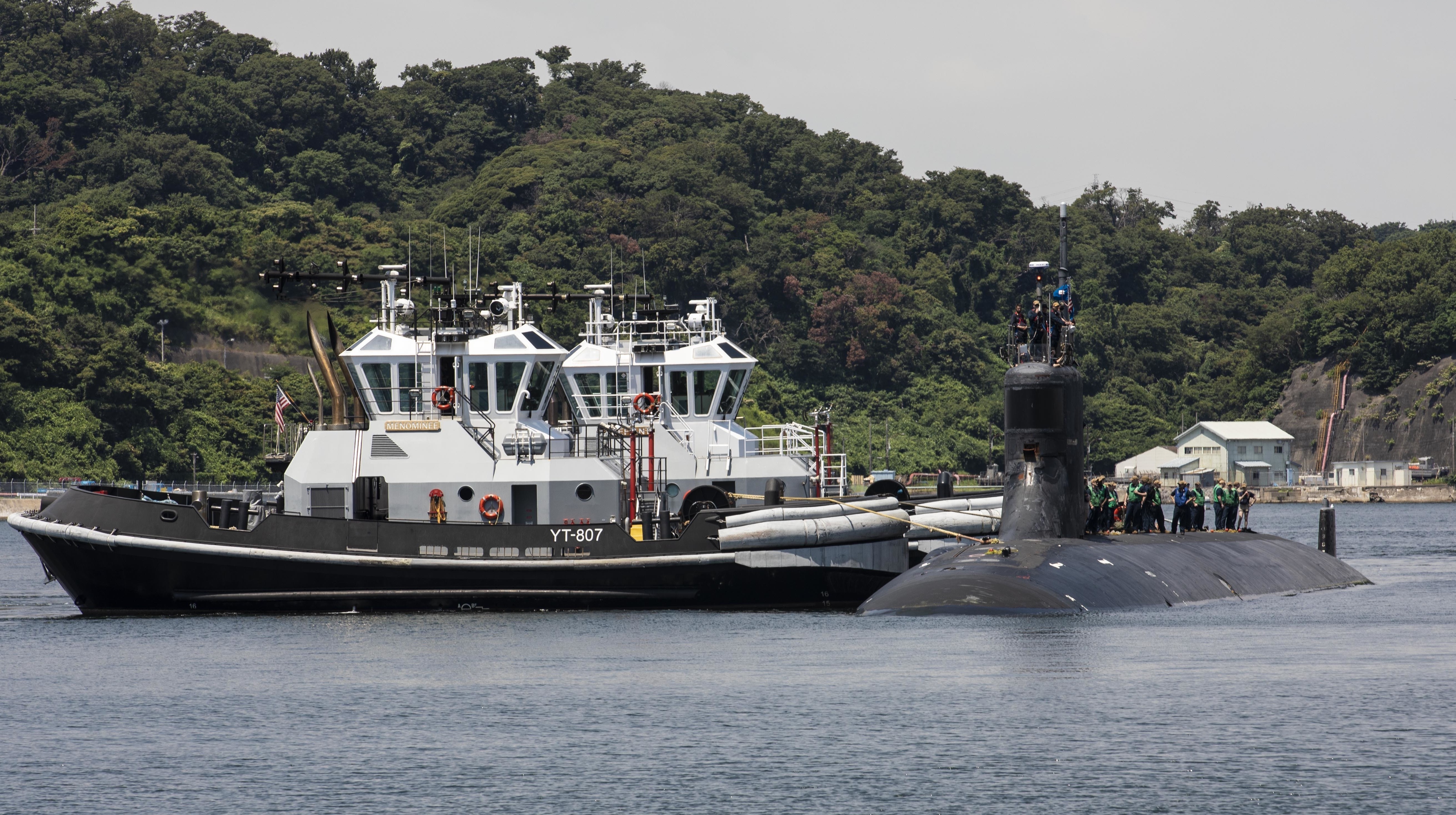
The U.S. attack submarine that struck an underwater seamount last month is underway off the coast of Guam after more than a month of damage assessment repairs, two defense officials confirmed to USNI News on Thursday.
USS Connecticut (SSN-22) left Guam on its own power Thursday evening local time, according to ship spotters tracking the automatic identification signal (AIS) as it left the U.S. naval base on the island. The departure was confirmed to USNI News by two defense officials.
Cmdr. Cindy Fields, a spokesperson with Submarine Force, U.S. Pacific Fleet, would not confirm the underway when contacted by USNI News on Thursday. She said in a statement the submarine, “has been undergoing damage assessment, repairs and testing while in Guam. The submarine remains in a safe and stable condition.”
It’s unclear if the attack submarine was testing repairs and intended to come into port and begin the voyage to Bremerton, Wash., for its final round of repairs.
Following the Oct. 2 incident, the boat had traveled to Guam for initial repairs overseen by Naval Sea Systems Command, personnel from the Puget Sound Naval Shipyard and submarine tender USS Emory S. Land (AS-39).
The damage to the submarine was localized to the forward portions and may have damaged the ballast tanks, USNI News understands. The Navy has said repeatedly that the nuclear reactor plant and the propulsion system were undamaged.
Connecticut’s underway comes as the submarine force has announced a navigation stand down in what the Navy has determined was a preventable collision, Vice Adm. William Houston, commander of Naval Submarine Forces said on Wednesday.
“We have very rigorous navigation safety procedures and they fell short of what our standard was,” he said.
Earlier this month, U.S. 7th Fleet commander Vice Adm. Karl Thomas relieved Connecticut’s commanding officer, executive officer and chief of the boat “due to loss of confidence” following the collision.
Moving ahead, the service will now have to determine how to squeeze the attack boat into the repair schedules of the Puget Sound Naval Shipyard, which is already suffering a backlog of maintenance.
“If we ended up doing [the Connecticut work] in one of the public shipyards, that would certainly cause perturbations in all the other work in the shipyards,” Stefany said before the House Armed Services Committee readiness subcommittee in October.





